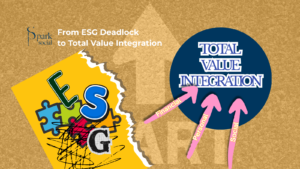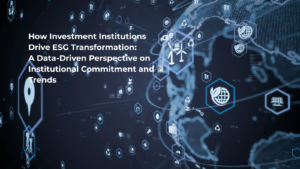
Rethinking Compliance: A Strategic Enabler of Social Value and the SDGs
In the evolving landscape of sustainable development, the role of compliance is undergoing a significant transformation. Traditionally perceived as a control function centered on regulatory adherence and risk mitigation, compliance is now being recognized as a strategic driver of social value, closely aligned with the objectives of the United Nations Sustainable Development Goals (SDGs) — particularly SDG 16: Peace, Justice and Strong Institutions.
Compliance and SDG 16: Institutional Integrity as a Social Asset
SDG 16 calls for inclusive, accountable, and effective institutions. These outcomes are not achievable without the core functions of a robust compliance framework. Compliance ensures that organizations operate within ethical boundaries, uphold legal standards, and implement governance mechanisms that foster transparency and trust.
By reinforcing institutional integrity, compliance professionals play a pivotal role in shaping systems that are not only lawful but also just and resilient. This directly contributes to the broader social and economic stability needed for sustainable development.
Moving Beyond Risk: Compliance as a Value Creator
The traditional compliance mindset is often risk-averse and reactive. However, when viewed through the lens of social value, compliance becomes a forward-looking discipline — one that proactively supports ethical decision-making, stakeholder engagement, and long-term organizational health.
This perspective reframes compliance from a cost center into a value-creating function. Organizations that embed social value principles into compliance systems can enhance their reputation, strengthen stakeholder trust, and build more sustainable operations.
The Case for Integration: Social Value and Compliance
Social value refers to the net positive impact an organization has on people, communities, and the environment. It is increasingly used as a measure of non-financial performance, particularly in sectors undergoing ESG transformation or seeking to align with the SDGs.
Integrating social value into compliance frameworks involves:
Aligning internal policies with broader societal goals
Embedding ethical and inclusive considerations into risk assessments
Ensuring governance structures account for both regulatory and stakeholder expectations
Using compliance data to inform social impact reporting and strategy
When executed well, this integration enhances organizational alignment with SDG 16, while also contributing to goals such as SDG 4 (Quality Education) and SDG 8 (Decent Work and Economic Growth) through improved systems, capacity building, and ethical labor practices.
A Call for Professional Capacity Building
To realize this integrated approach, there is a growing need to build compliance capacity with social value literacy. Compliance professionals should be equipped not only with regulatory knowledge, but also with a systems-thinking mindset, a grasp of sustainability principles, and an understanding of stakeholder impact.
This calls for targeted education and training — bridging the gap between traditional compliance frameworks and emerging social value expectations. By evolving the competencies of compliance roles, institutions can become more adaptive, inclusive, and aligned with long-term sustainability goals.
Conclusion
Compliance is no longer confined to the margins of organizational strategy. In an era defined by ESG accountability and the urgency of sustainable development, it is increasingly seen as a cornerstone of responsible business.
When integrated with social value principles, compliance can act as a catalyst for achieving the SDGs, strengthening institutional trust, and creating lasting impact for society at large.
Organizations that recognize and invest in this evolution will not only meet regulatory expectations — they will lead in building the foundations of a more equitable and sustainable future.
You may also like




